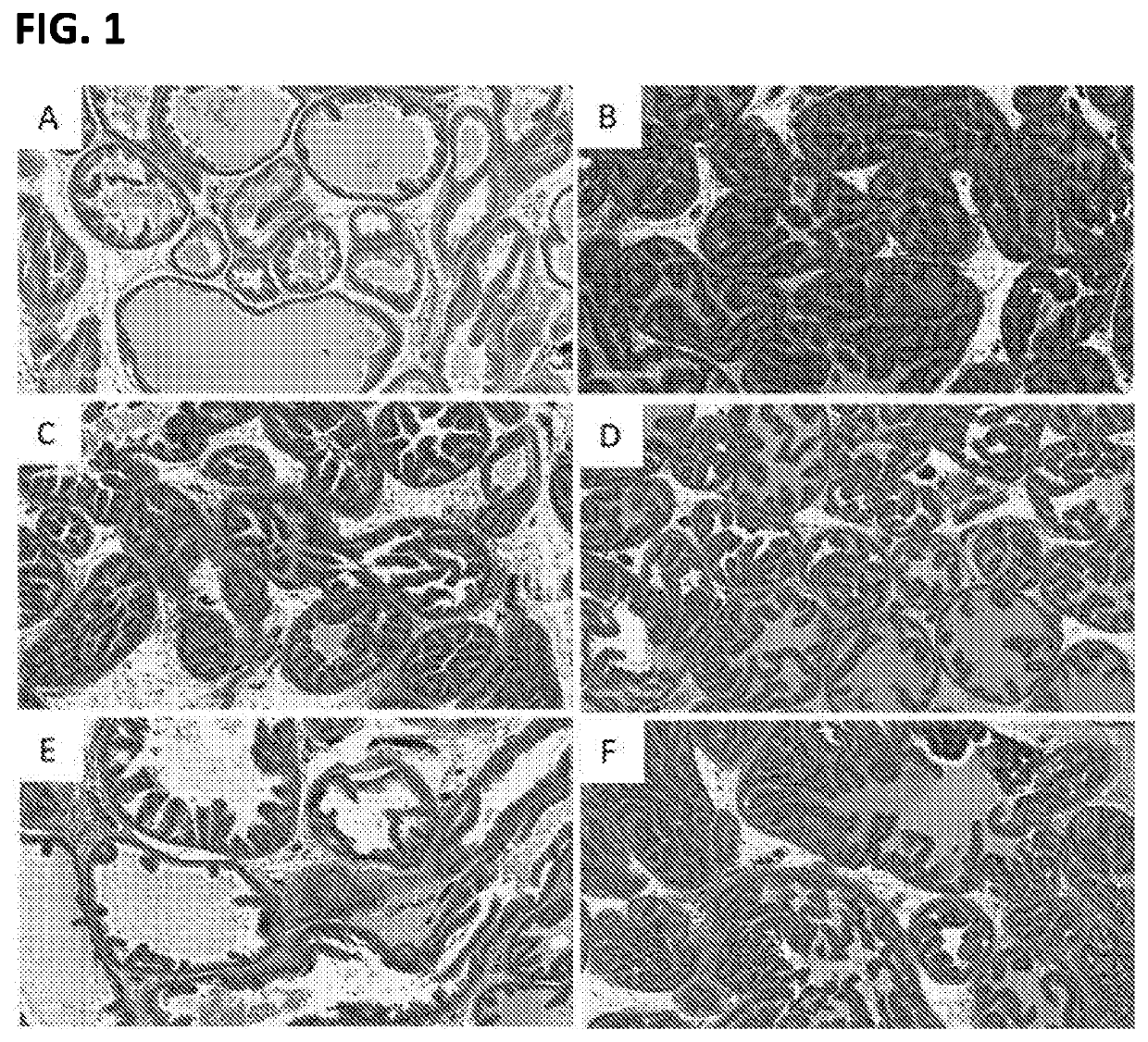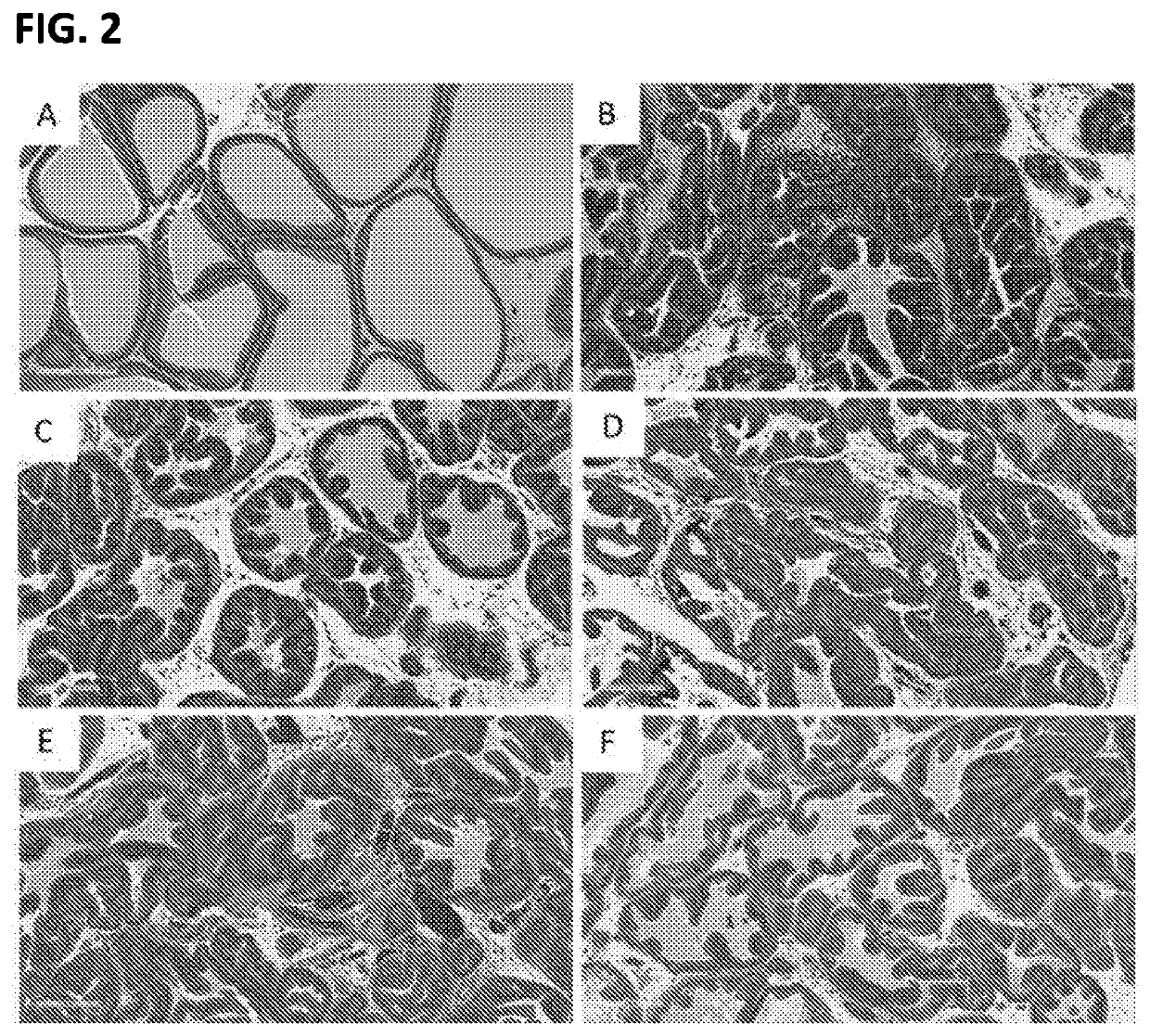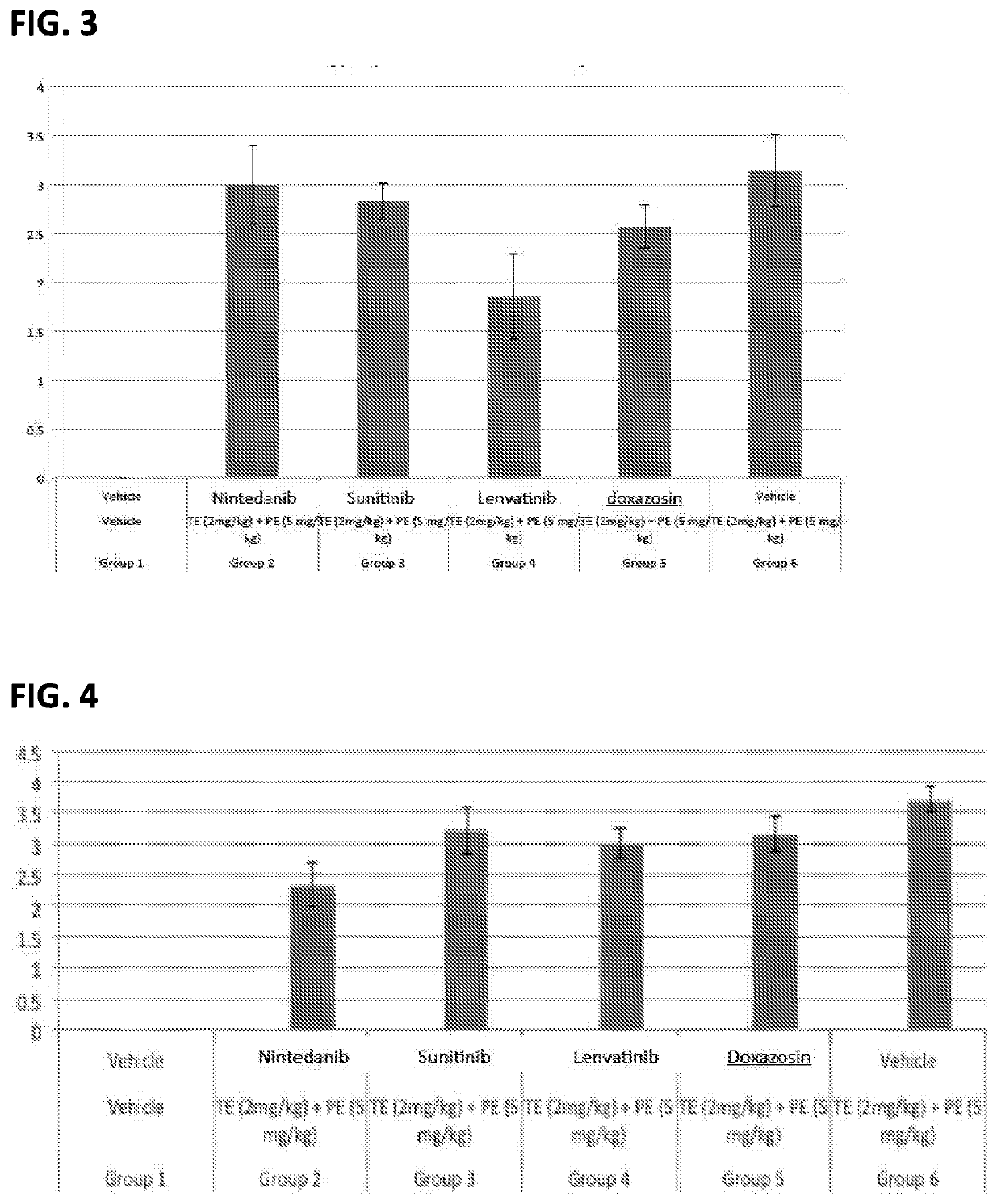Multikinase inhibitors and uses in prostatic hyperplasia and urinary track diseases
a multi-kinase inhibitor and prostate hyperplasia technology, applied in the direction of heterocyclic compound active ingredients, drug compositions, organic active ingredients, etc., can solve the problems of reducing the risk of prostate cancer, slow-acting 5alpha-reductase inhibitors, and producing vasodilator side effects
- Summary
- Abstract
- Description
- Claims
- Application Information
AI Technical Summary
Benefits of technology
Problems solved by technology
Method used
Image
Examples
example 1
[0035]Despite morphological and anatomical differences between prostate glands in humans and rodents, there are many similarities with regard to their pharmacology and histochemistry that make study of BPH in rats a useful investigative approach. The prostate gland in both humans and rats is innervated by fine networks surrounding the glandular elements. Most of these neural structures are catecholaminergic and contain different subtypes of adrenergic receptors.
[0036]Because of the potential effect of adrenergic innervation on the growth of prostatic cells, the effects of phenylephrine administration on the prostate in rats have been examined. At a dose of 1 mg / kg per day, phenylephrine induces irregular ducts with intraluminal projections. The epithelium becomes thicker and there are even focal “piling-up” of cells. The stroma, in turn, demonstrates hyperplasia and hypertrophy of fibrocytes and smooth muscle cells. These changes correspond to the entity of benign prostatic hyperpla...
example 2
[0042]Morphologically, BPH is characterized by the formation of a new architecture through the proliferation of the epithelium in pre-existing ducts. Given that stromal cells serve important paracrine regulatory functions in epithelial cell homeostasis, late stage changes in stromal-epithelial interactions could provide insight into BPH progression. A second study was conducted to determine the therapeutic effects of test compounds and vehicle, post-induction in a protocol using testosterone and / or phenylephrine induced BPH in rats.
[0043]Male Wistar rats were induced with testosterone (2 mg / kg) plus phenylephrine (5 mg / kg) administered daily by subcutaneous injection on days 1 through 28. Vehicle or test compounds sorafenib (1% w / w), pirfenidone (2.5% w / w), and riociguat (1% w / w) were administered by intra-prostate injection (0.2 ml) in the dorsolateral lobe on days 15 and 29. Animals were euthanized on day 42. Body weights were determined. Prostate glands were harvested and weighed...
example 3
[0048]Prostate concentration of sorafenib after intraprostate injection in the rat.
[0049]In this study, single intraprostate injections of sorafenib were administered on Days 15 and 29. Animals were euthanized on Day 42 and prostate tissue samples were obtained for analysis. Tissue samples were prepared using a Bead Ruptor homogenizer, followed by extraction with acetonitrile and high-speed centrifugation. An LC-MS / MS method for measurement of sorafenib was used.
[0050]On day 42, the mean concentration in the prostate for sorafenib was 892 mg / gm. These tissue concentrations are higher than required for inhibition of VEGFR and PDGFR activity. This study supports the idea that despite good sorafenib exposure in the prostate, sorafenib did not show any therapeutic effect in the prostate.
PUM
| Property | Measurement | Unit |
|---|---|---|
| w/w | aaaaa | aaaaa |
| mass | aaaaa | aaaaa |
| volume | aaaaa | aaaaa |
Abstract
Description
Claims
Application Information
 Login to View More
Login to View More - R&D
- Intellectual Property
- Life Sciences
- Materials
- Tech Scout
- Unparalleled Data Quality
- Higher Quality Content
- 60% Fewer Hallucinations
Browse by: Latest US Patents, China's latest patents, Technical Efficacy Thesaurus, Application Domain, Technology Topic, Popular Technical Reports.
© 2025 PatSnap. All rights reserved.Legal|Privacy policy|Modern Slavery Act Transparency Statement|Sitemap|About US| Contact US: help@patsnap.com



